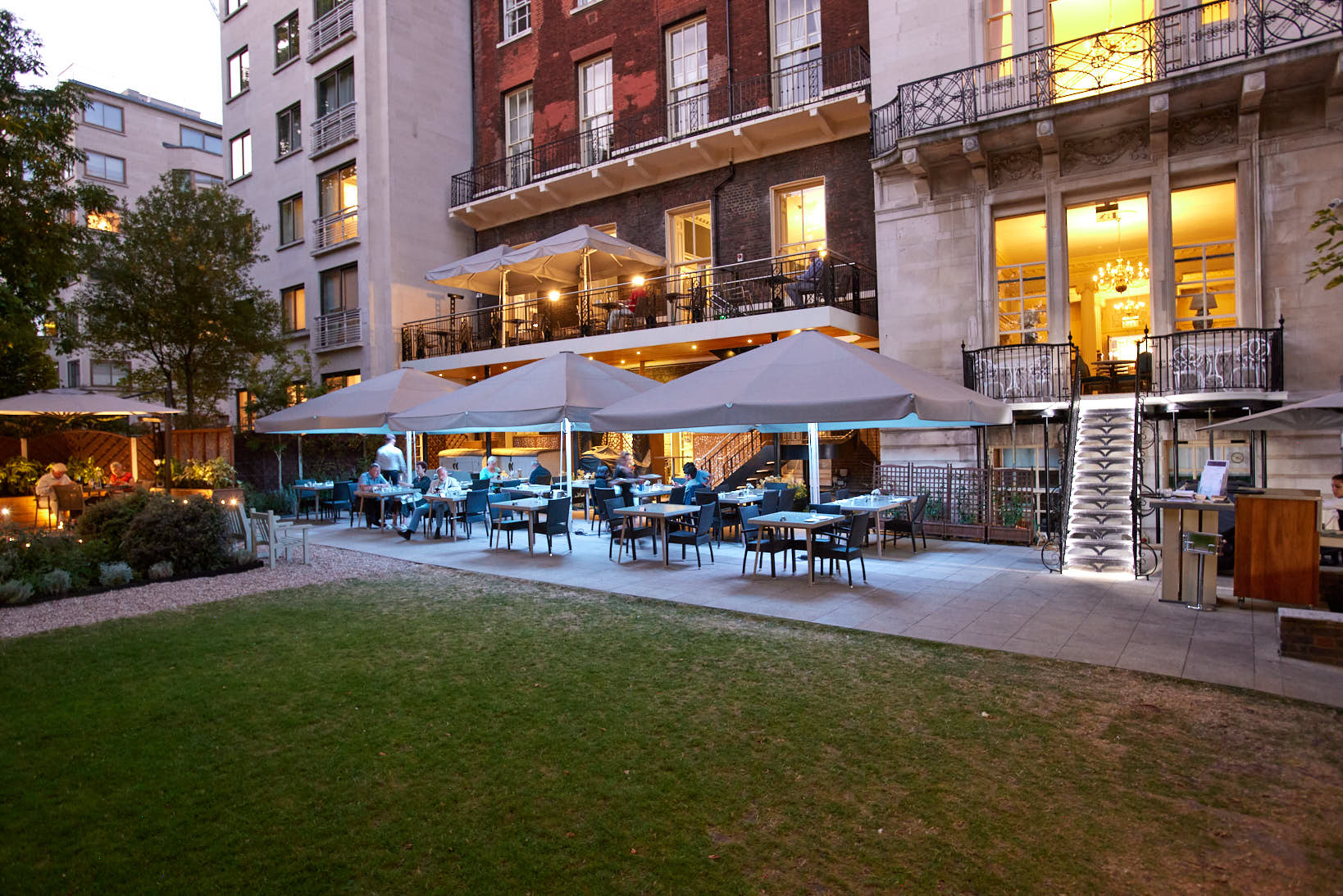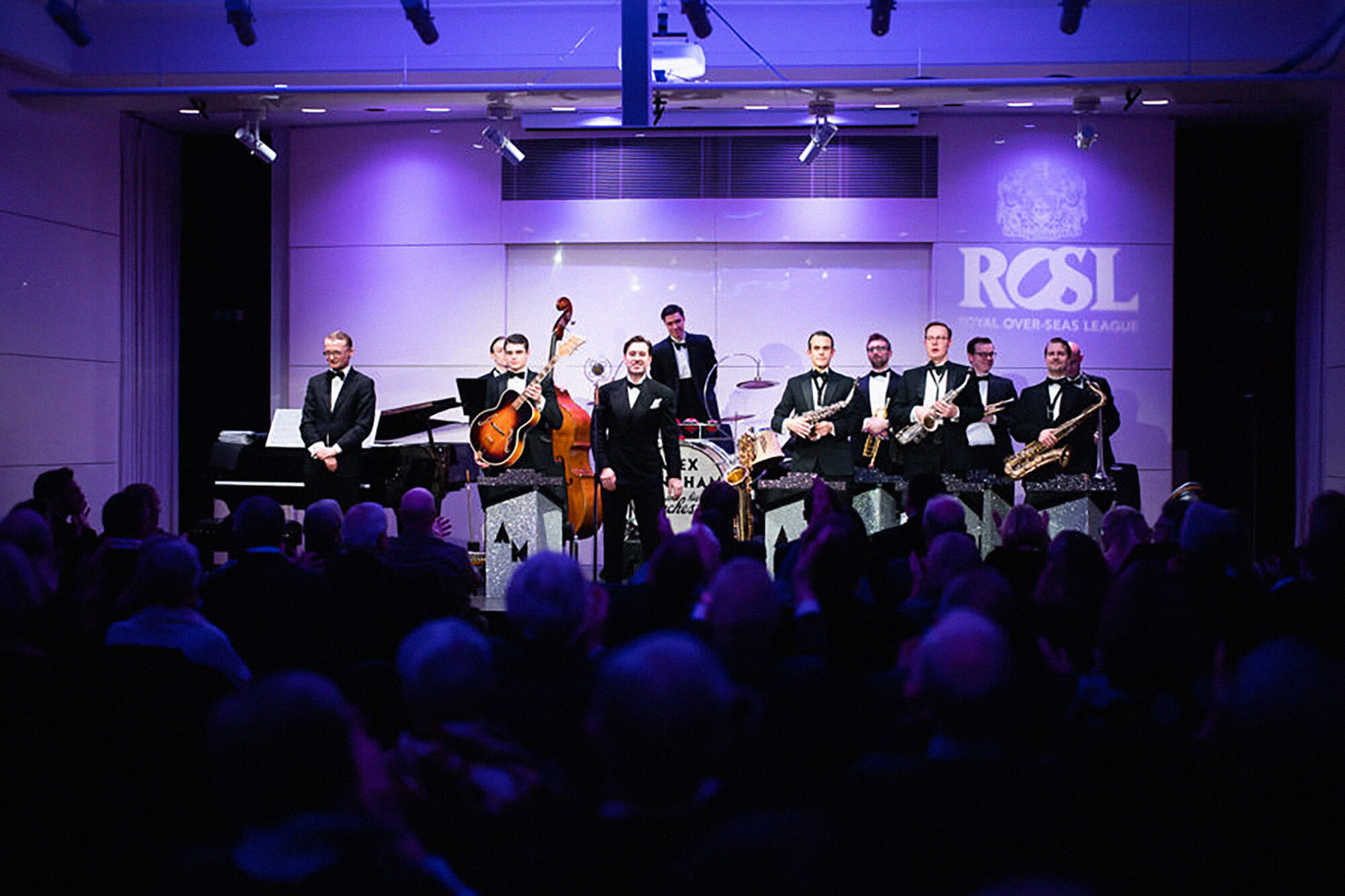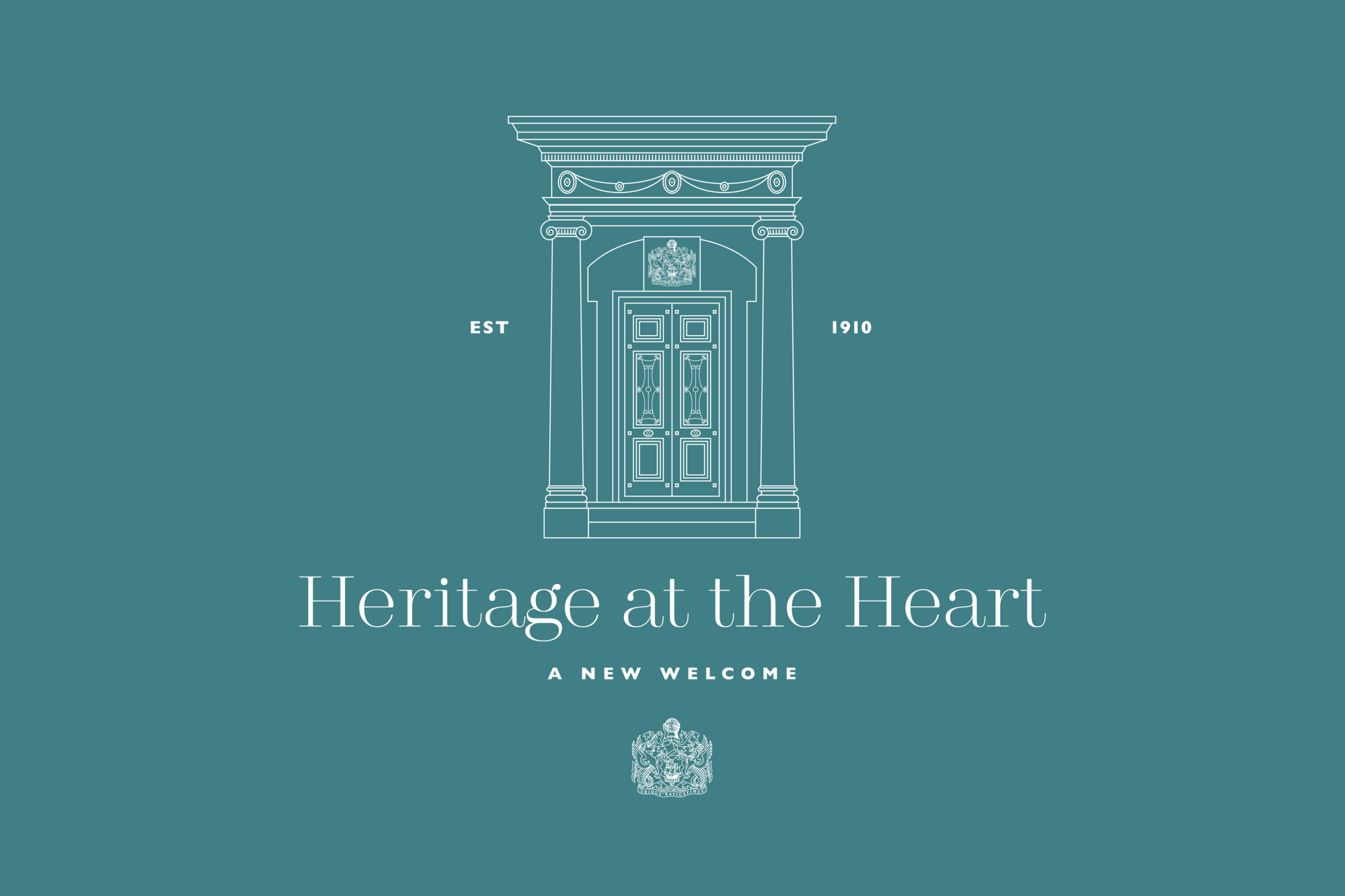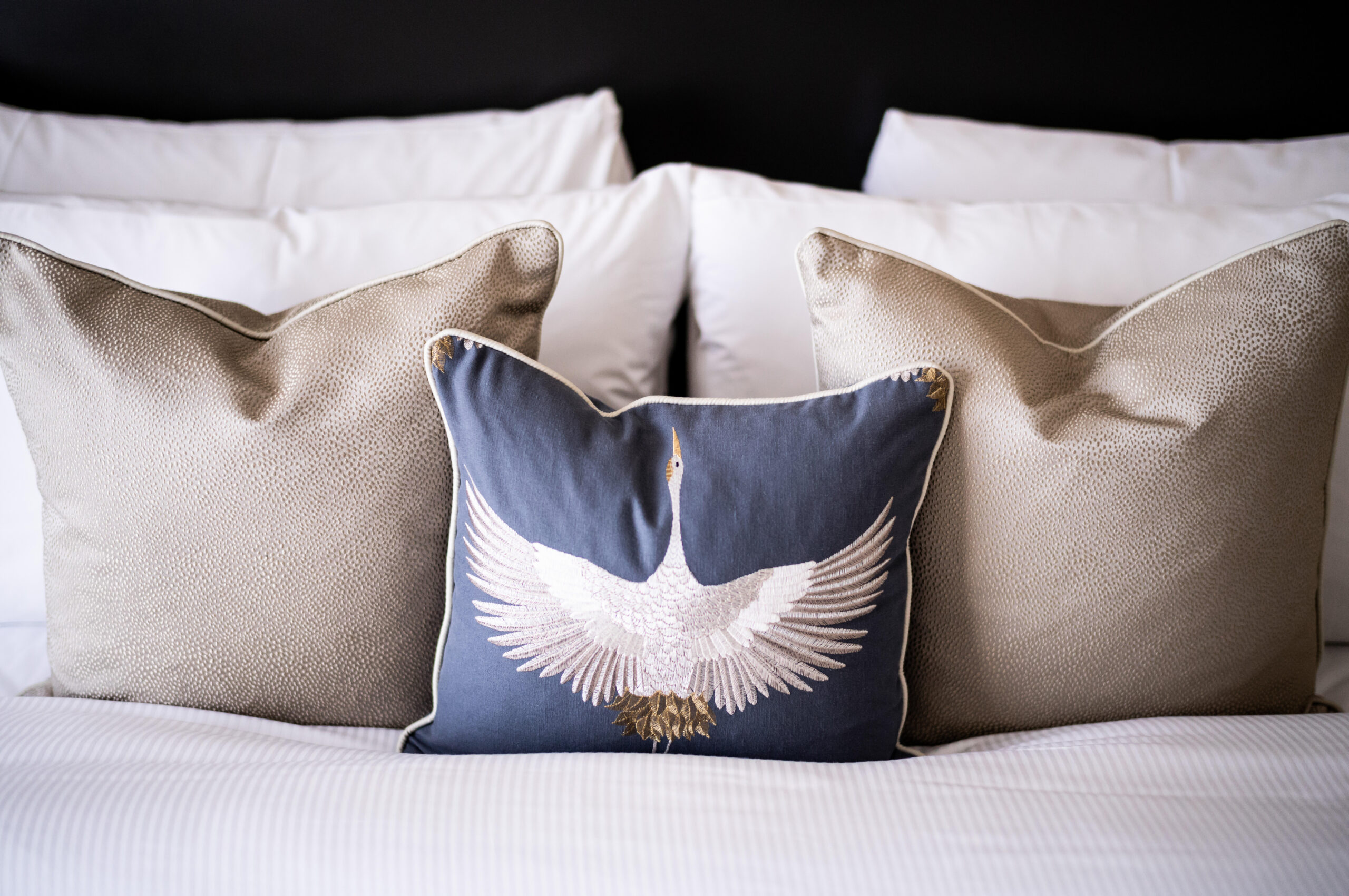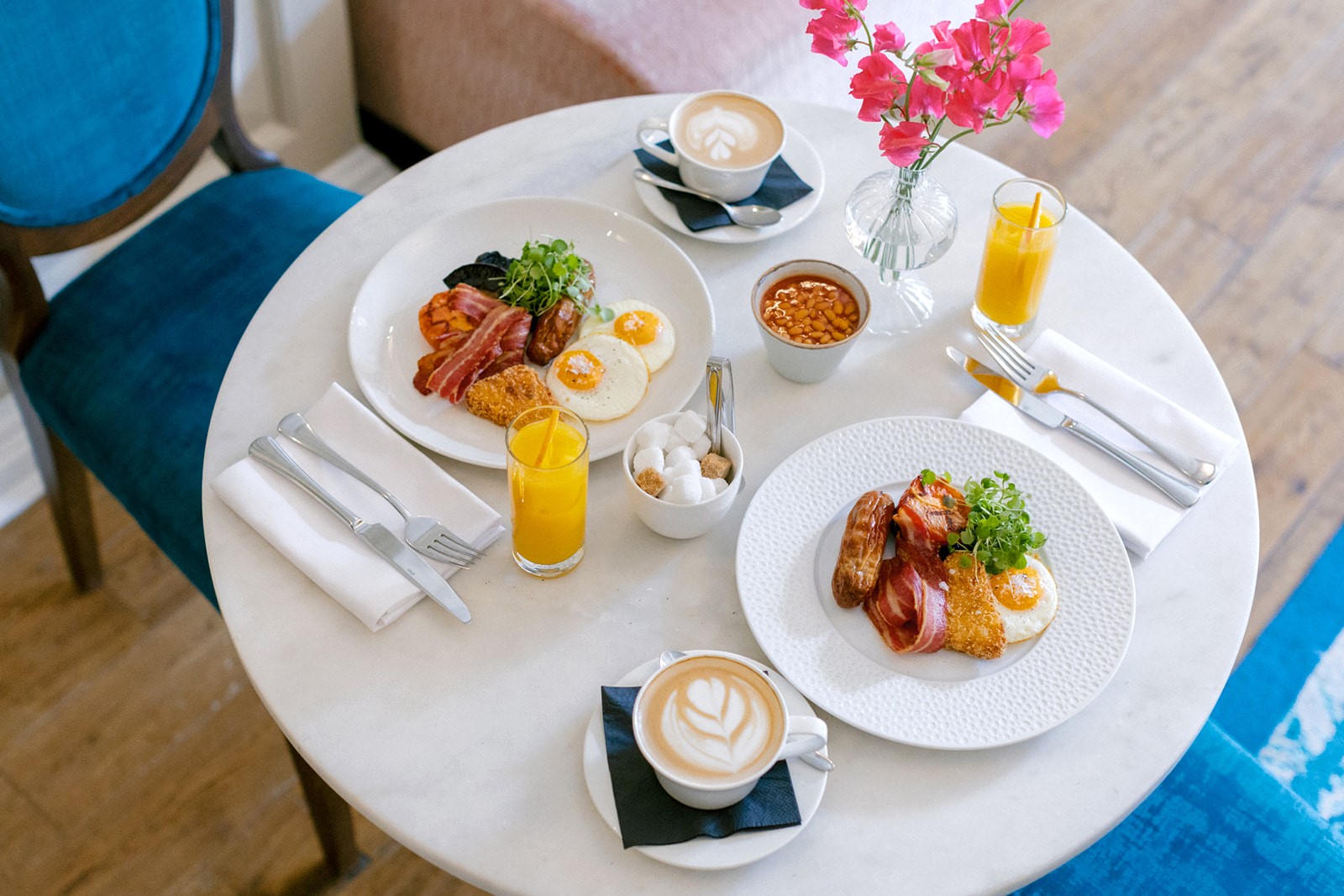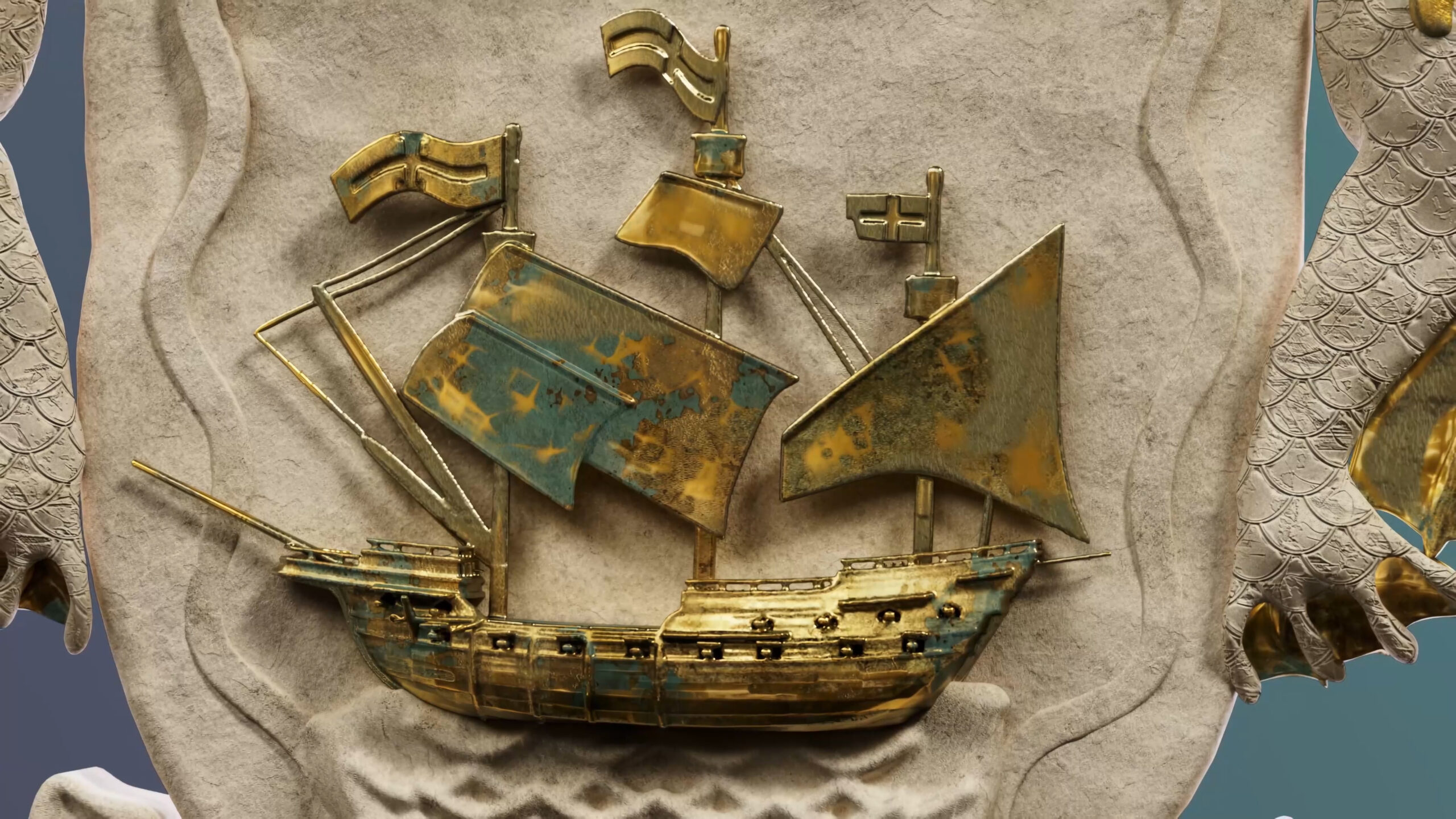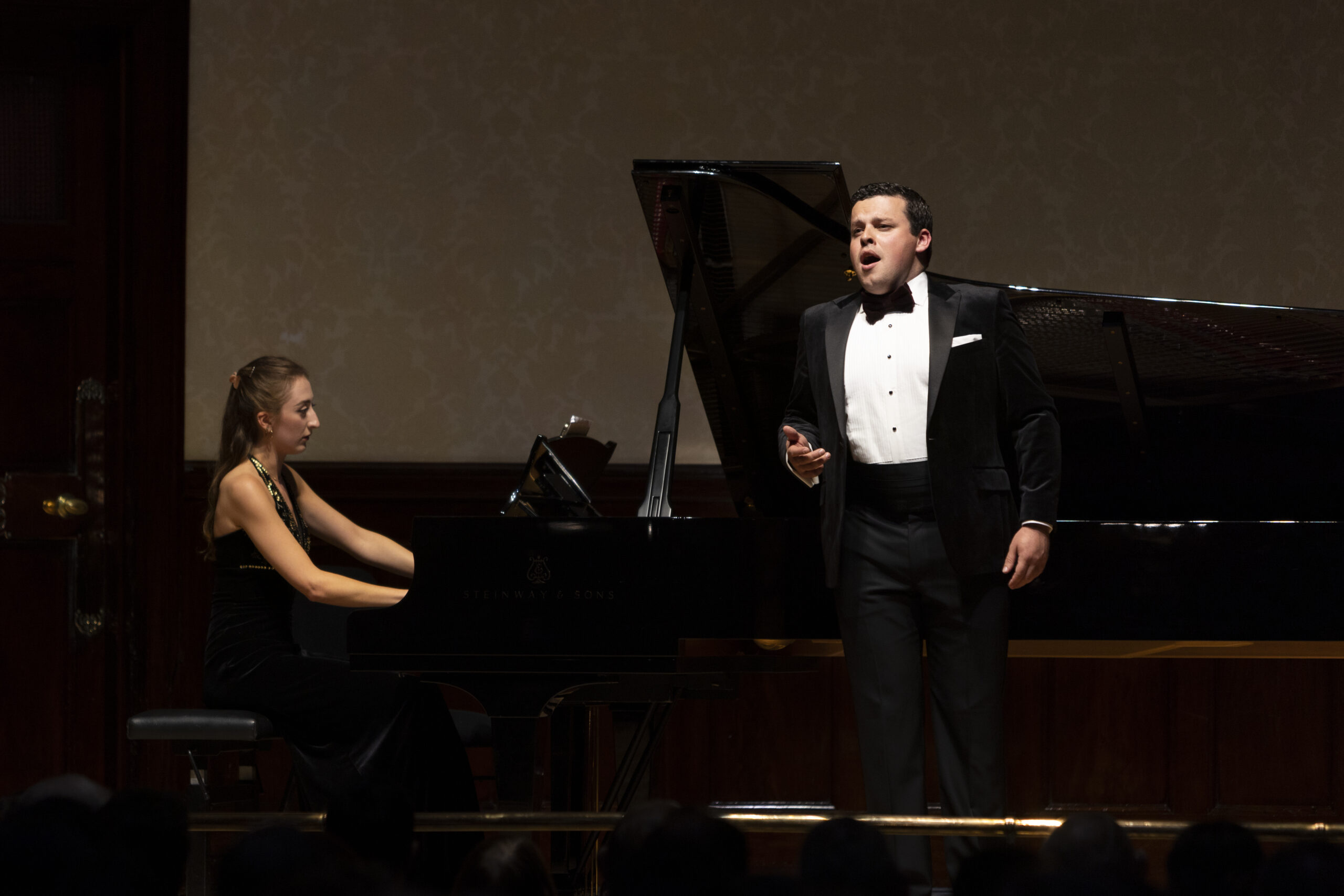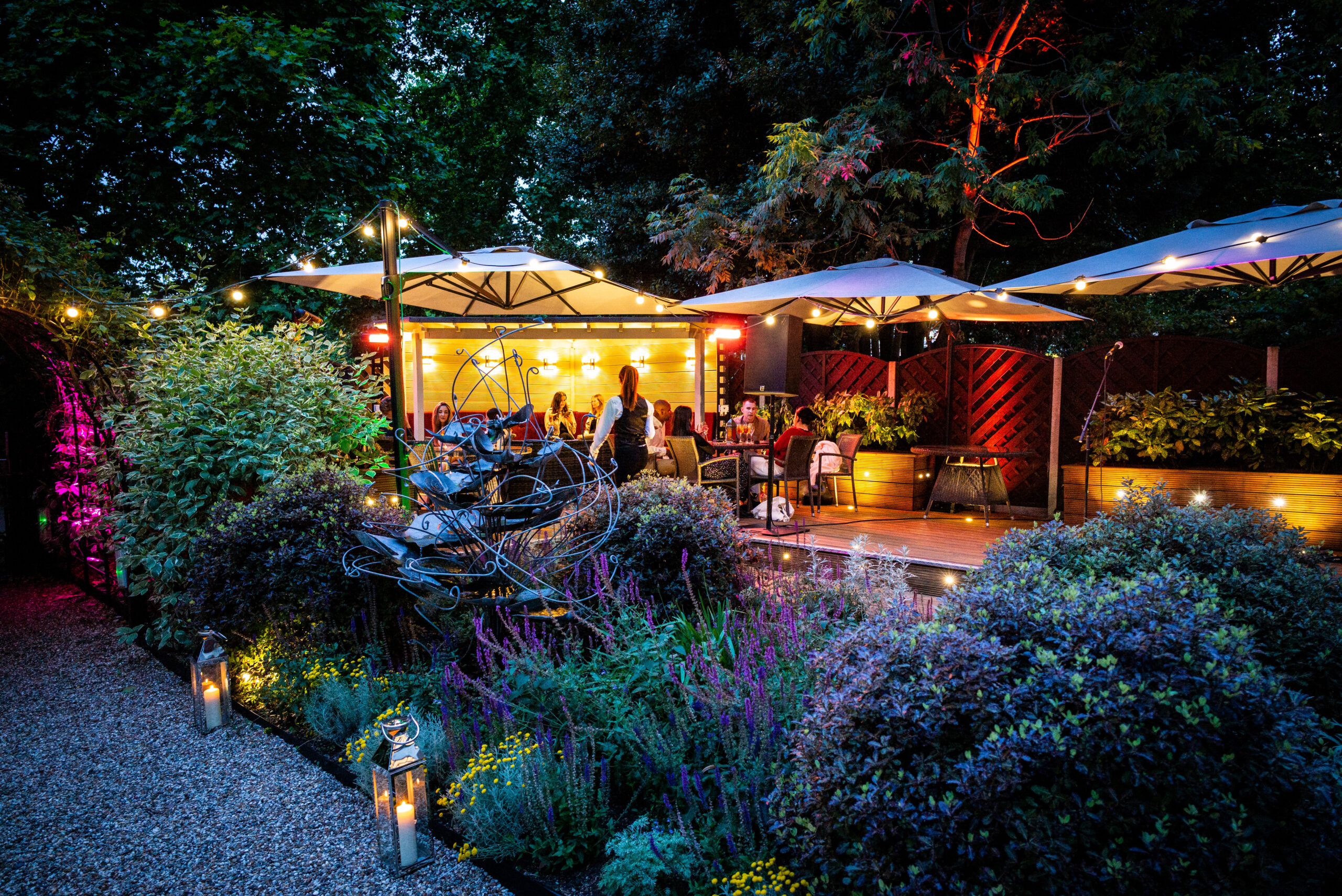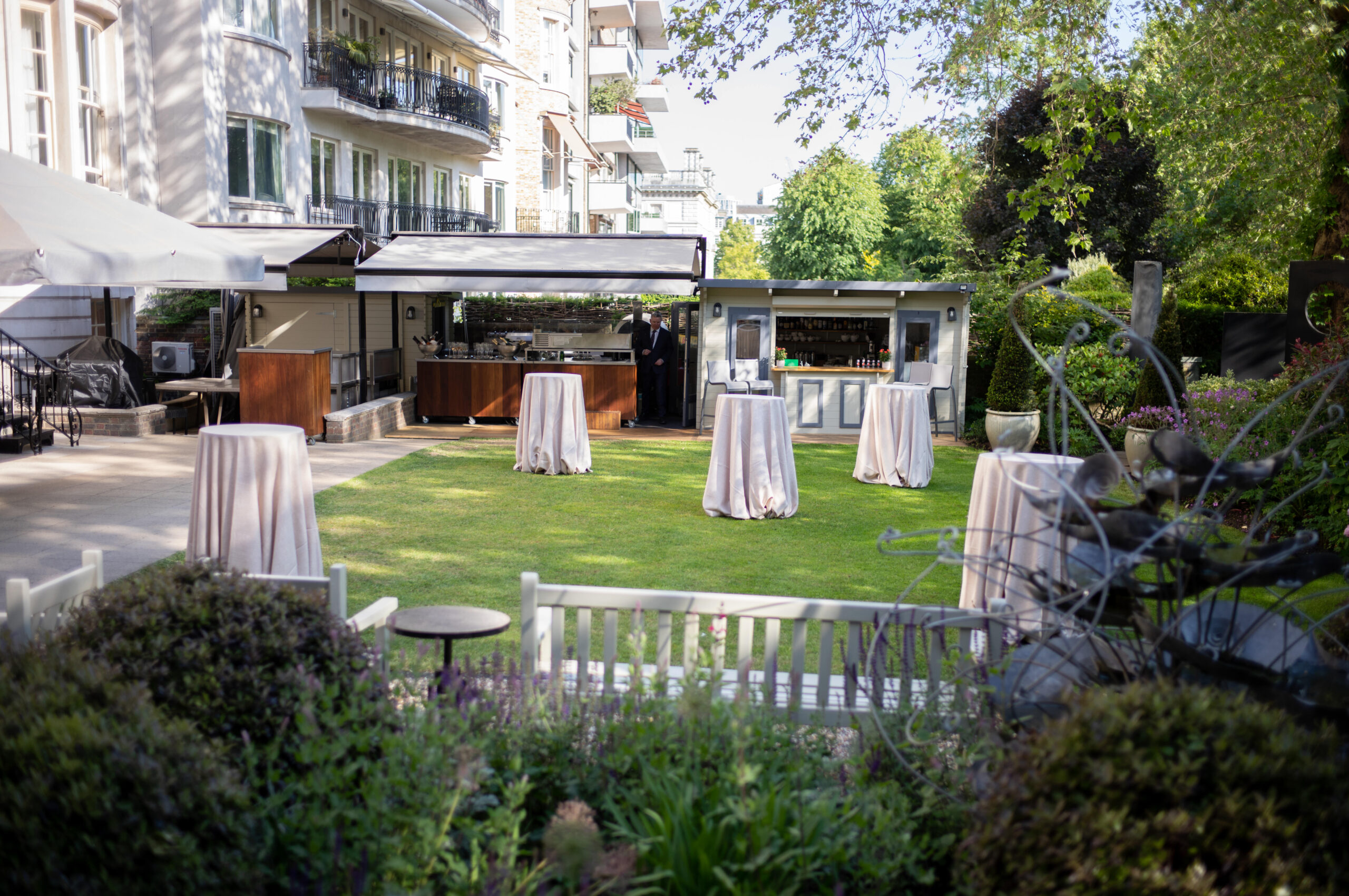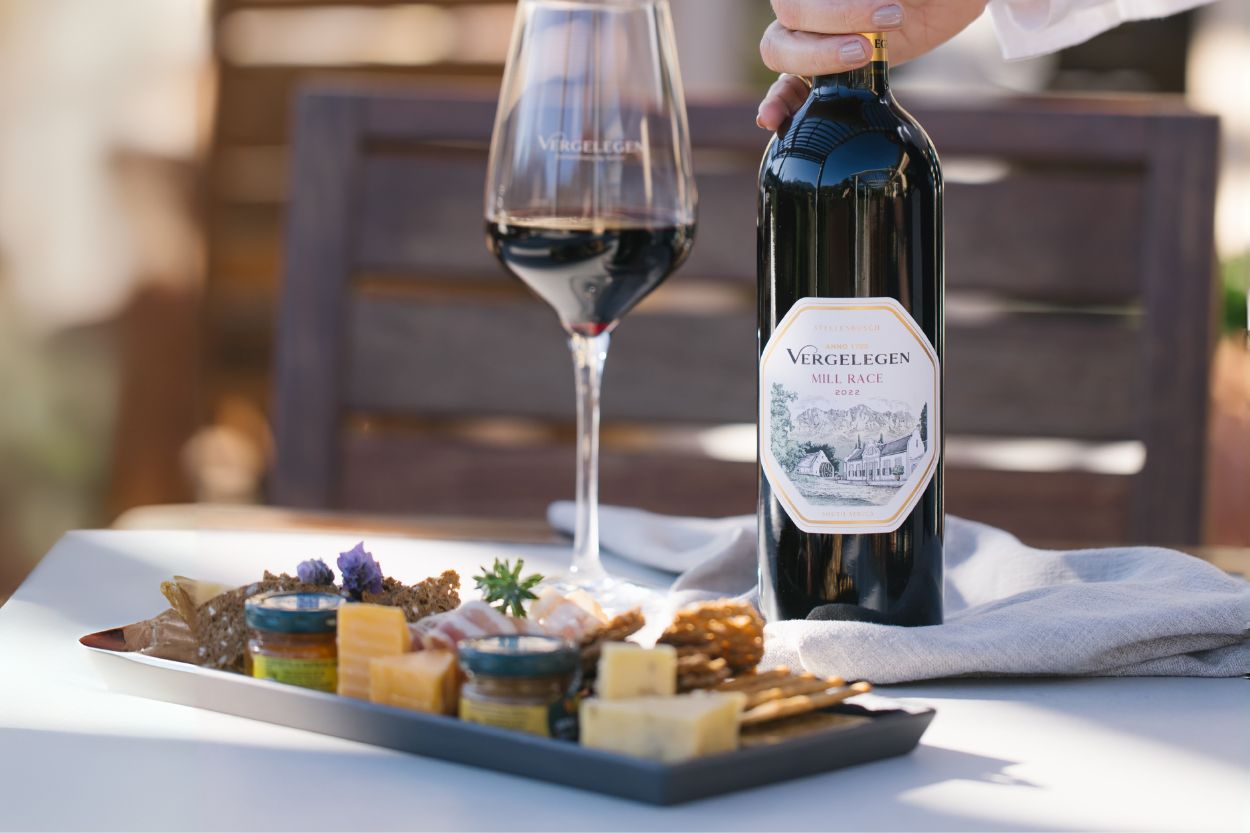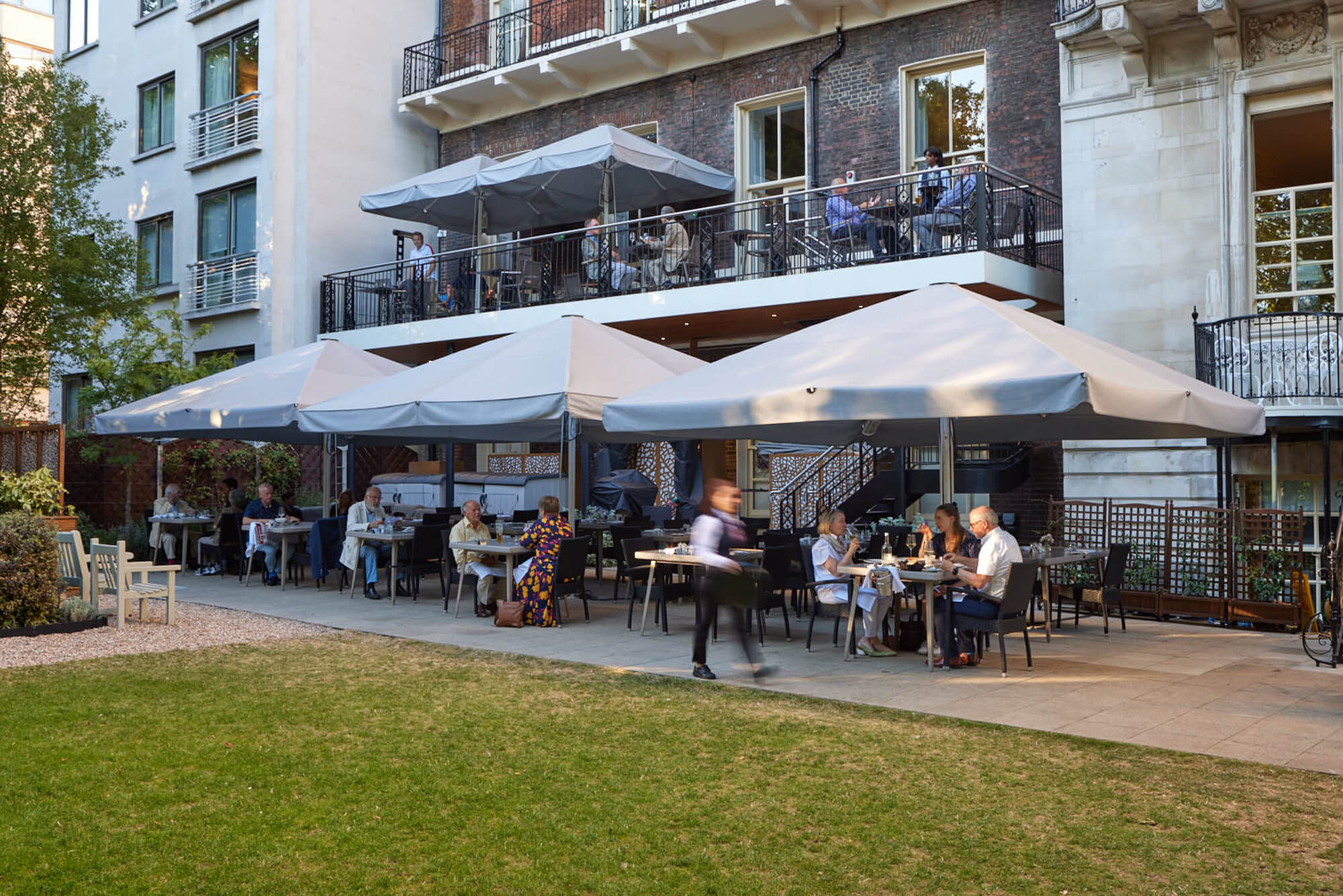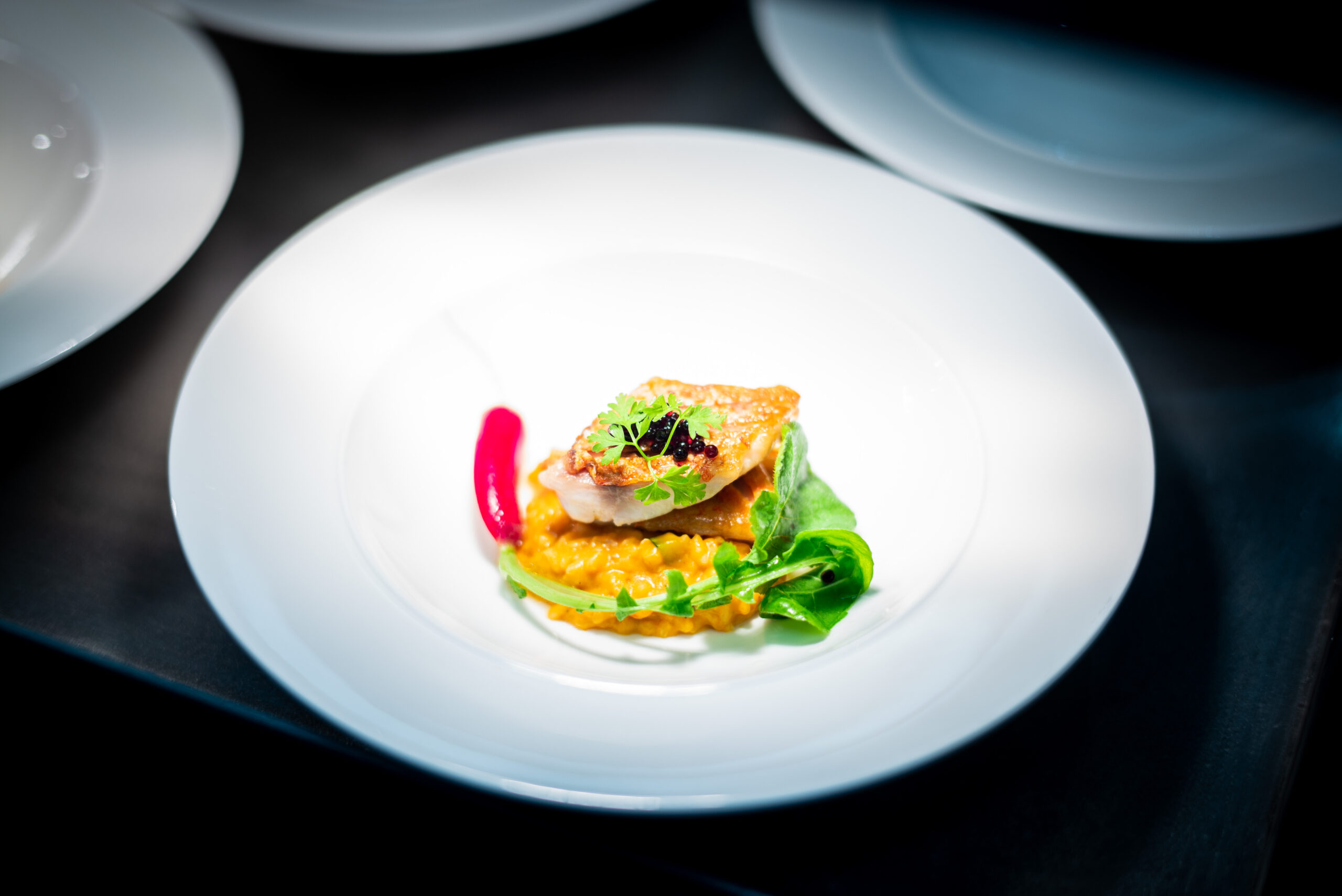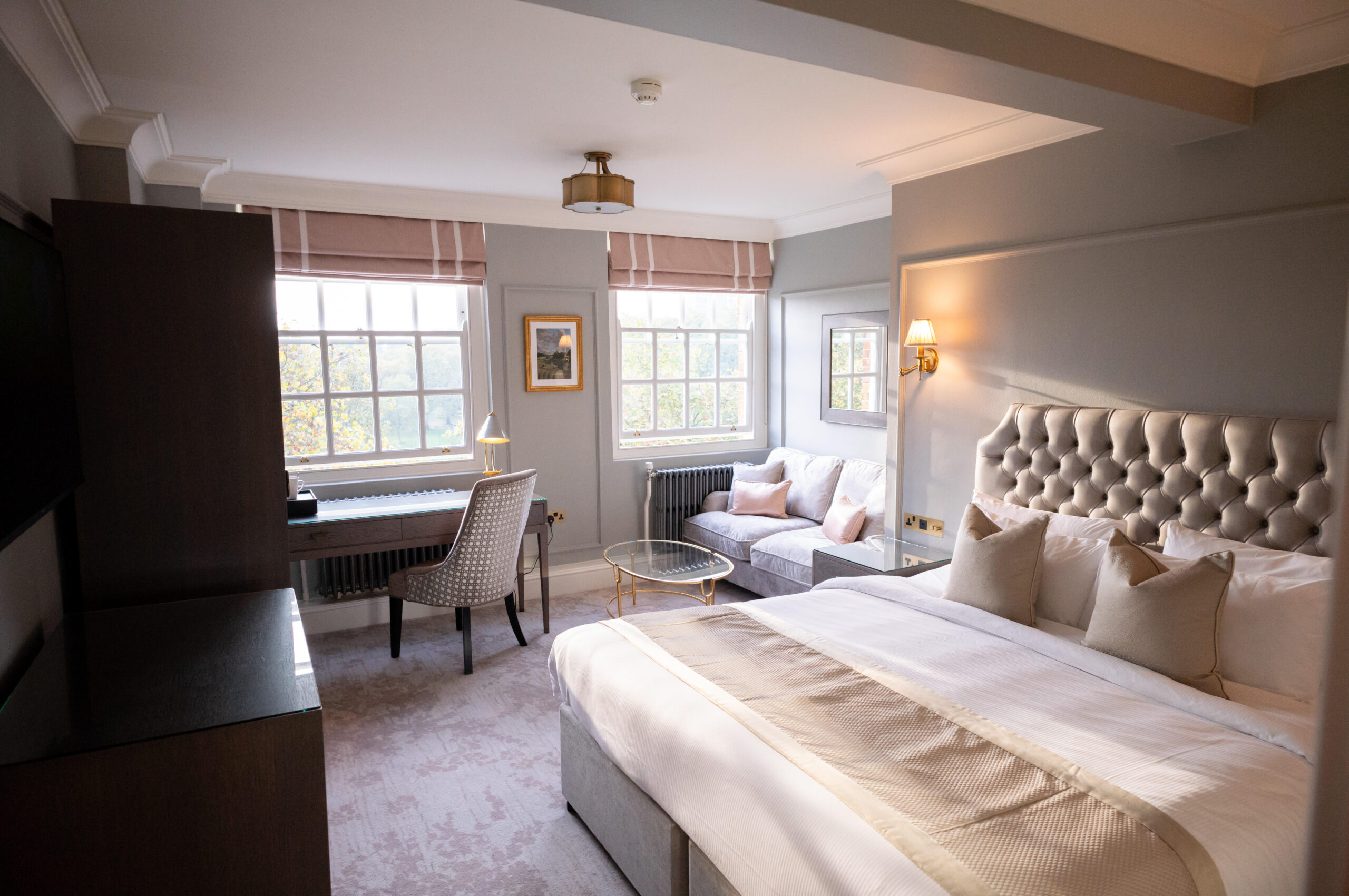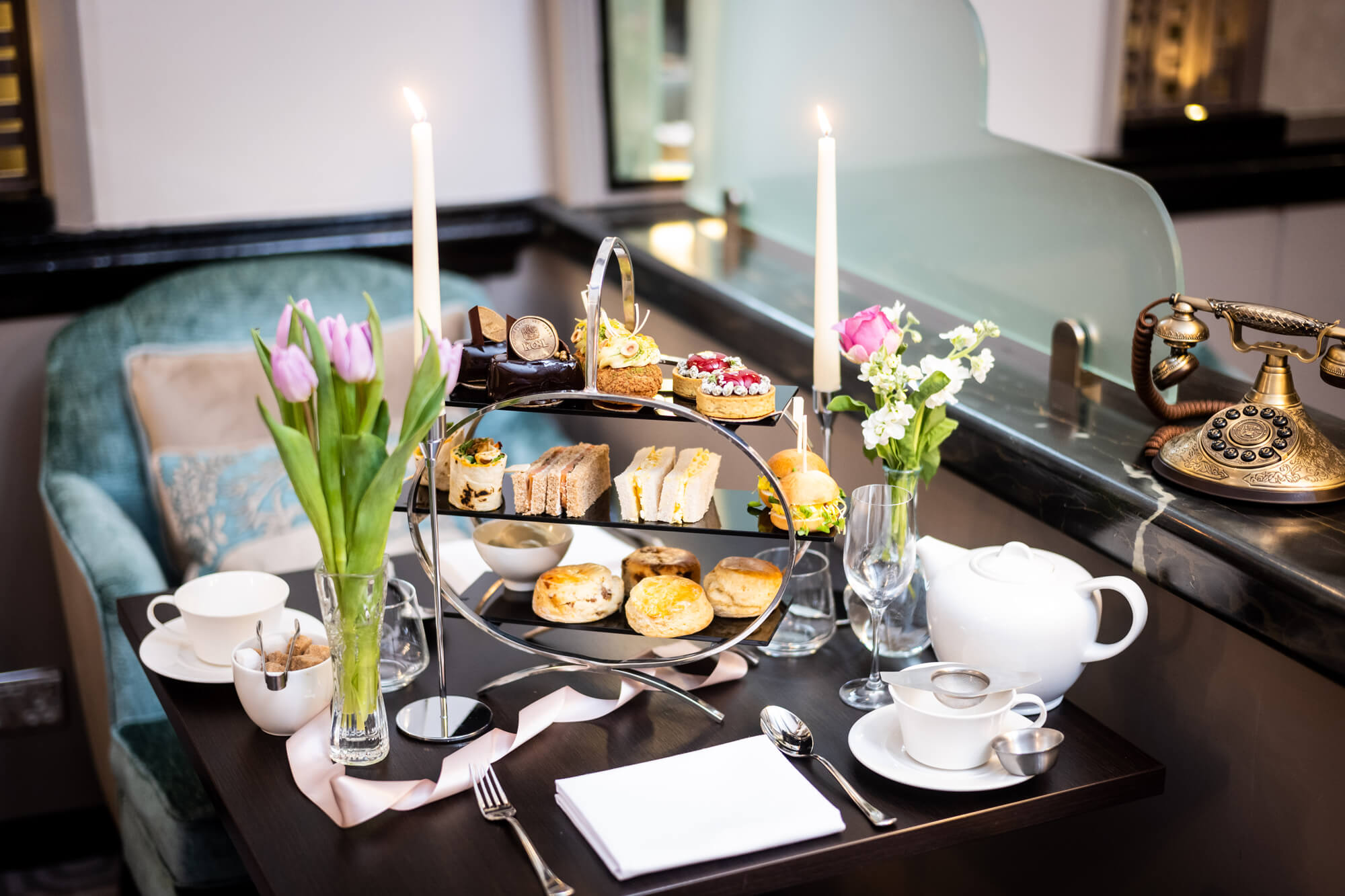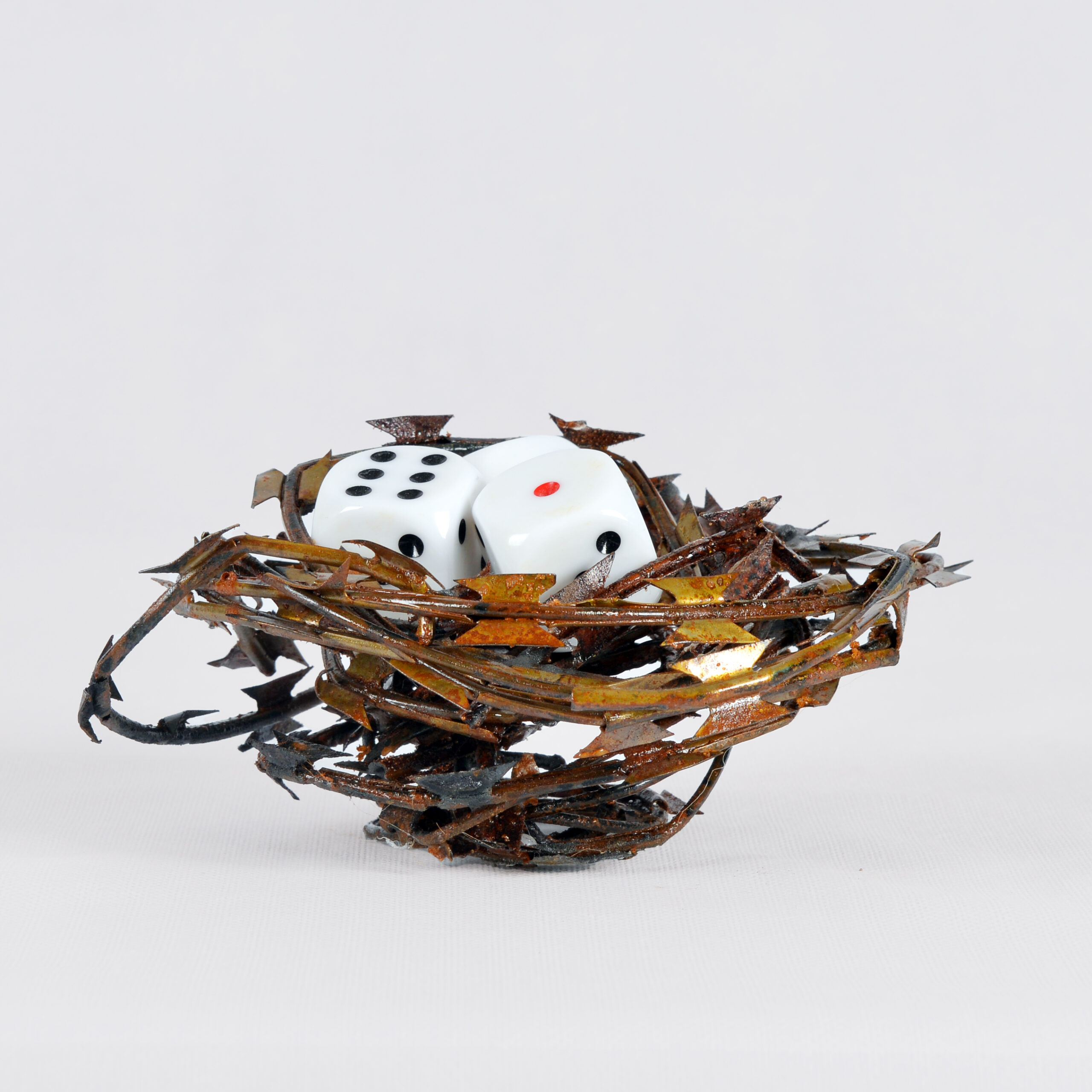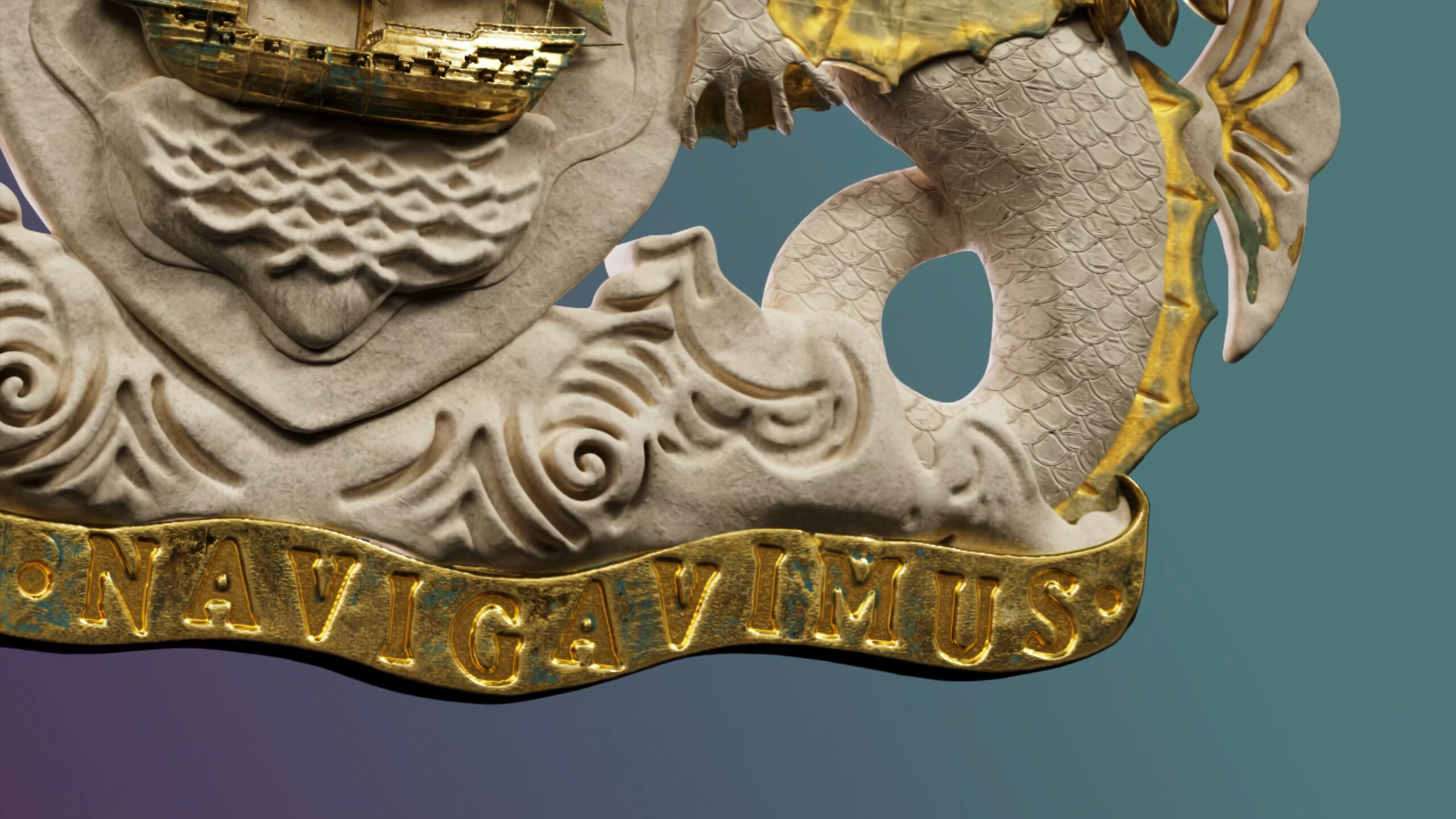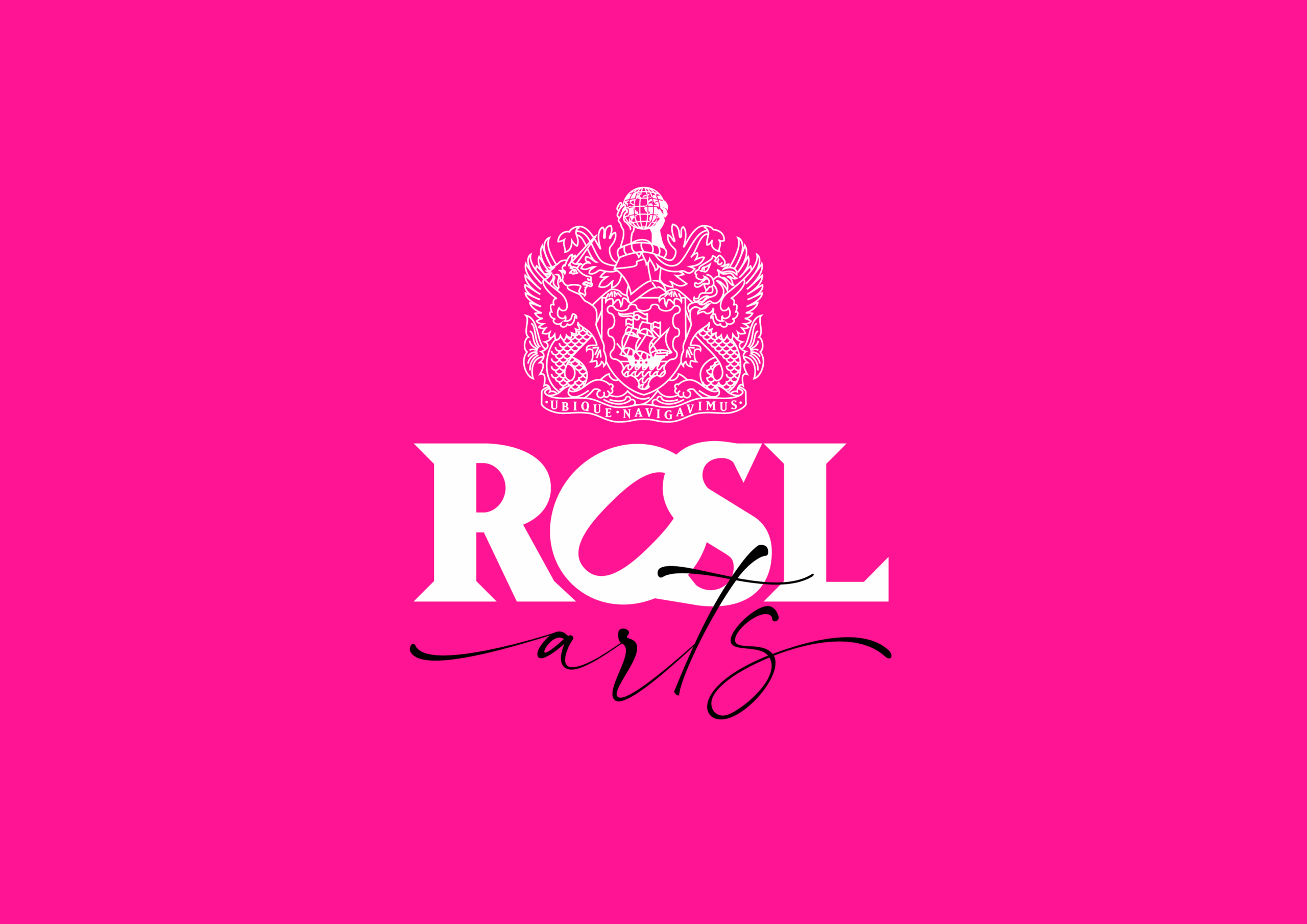- About Us
- Membership
- What’s On
- ROSL Events
- About Club Events
- Public Affairs
- Calendar of Events
-
Upcoming Events
-
Annual Music Competition, Gold Medal Final 2025
Fri. 18 July - 19:30
![ROSL Annual Music Competition 2024 Wigmore Hall]()
-
NZ Concert & Garden Drinks
Mon. 21 July - 18:15
![ROSL_Pettman_Scholars_2024_Lorna_Madeleine_NZ_Concert]()
-
Saxophone Lounge Nights in the Garden
Fri. 25 July - 18:30
![Brabourne Room & Garden, Club’s Brabourne Room The Garde an Rosl]()
-
Jazz in the Garden
Fri. 01 August - 19:00
![Jazz in the Garden - Oliver Lord]()
-
Jazz in the Garden
Fri. 08 August - 19:00
![ROSL garden Green Park]()
-
Jazz in the Garden
Fri. 15 August - 19:00
![Corporate Photographer London]()
-
Cheese and Wine Tasting with Paxton & Whitfield and Vergelegen Estate
Wed. 20 August - 18:45
![Vergelegen Estate and cheese]()
-
London History Series Talk: The 20th Century and Beyond
Thu. 21 August - 18:00
![20th century London credit alamy stock country life]()
-
Jazz in the Garden
Fri. 22 August - 19:00
![ROSL_garden_green_park_view4]()
-
Jazz in the Garden
Fri. 29 August - 19:00
![jazz-in-the-garden-nights-oliver-lord]()
-
Friday 24 November was declared the first ever National Illustration Day, which was an apt occasion as Royal Over-Seas League hosted an afternoon opening for The Return of the Spoon-Billed Sandpiper.
Culinary collaboration with Celebrity Chef Cyrus Todiwala

We are thrilled to announce a culinary collaboration with Cyrus Todiwala, OBE DL FIHA. Cyrus, a talented chef, restaurateur, educationist, author, and entrepreneur has introduced his innovative approach to Indian cuisine to the UK, with triumph. With his encyclopaedic knowledge of food history and cuisine, Cyrus has established himself as a leading figure in the culinary world. He has appeared on popular television shows such as BBC Saturday Kitchen, James Martin’s Saturday Morning on ITV, and the BBC 4 Food Programme. His classical chef training in Bombay has given him an edge in the industry, enabling him to pioneer Indian cuisine in London.
Together with his wife Pervin, Cyrus runs three London restaurants, which offer a diverse range of Indian cuisine. Café Spice Namasté, Cyrus’s eponymous restaurant, is a 25-year-old institution and the longest-running Michelin BIB Gourmand. Mr Todiwala’s Kitchen at the luxurious Hilton London Heathrow Airport Terminal 5 and Mr Todiwala’s Kitchen at the Lincoln Plaza London, part of the Hilton Curio Collection, share his name. Mr Todiwala’s Petiscos in Buckhurst Hill is a boutique restaurant located on the border between London and Essex.
Cyrus’s contributions to the catering and hospitality industry have been recognised with prestigious awards such as an MBE for his services to education and training and an OBE for services to the industry.
We are excited to explore this new partnership with Cyrus Todiwala, which we believe will provide our members with a unique opportunity to sample the finest dishes of Indian cuisine.
To take advantage of this unique fine dining Indian experience, whereby you can taste Cyrus’ bespoke menu for ROSL, please email dining@rosl.org.uk or reserve a table through our member portal.
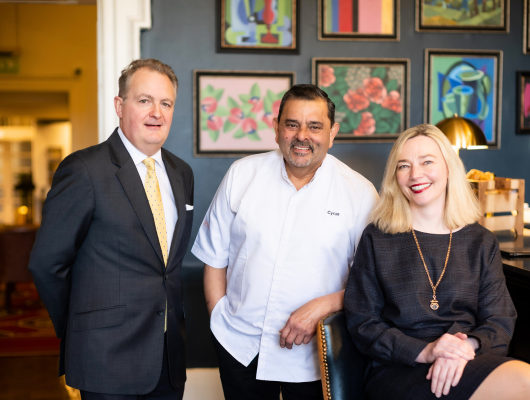
ROSL Awards 2023 Gold Medal in 71st year
The Royal Over-Seas League awards Gold Medal in 71st year of the Annual Music Competition. The top prize was awarded to Belgian clarinettist Emile Souvagie after wowing the panel and gathered audience with a spectacular performance of Poulenc’s Clarinet Sonata.
Last night, Belgian clarinettist Emile Souvagie became the Gold Medal winner in the competition’s 71st year, becoming the first musician not from a commonwealth country to take home the prestigious gold medal after the competition was opened to EU, EEA, Switzerland and American musicians last year. Emile was joined onstage by fellow Belgian and pianist Alexander Declercq.
The Gold Medal final was held at London’s Wigmore Hall where four soloists competed in the impressive final, Gerard Flotats cello, Bocheng Wang piano, Annabel Kennedy mezzo-soprano and Emile Souvagie clarinet. The adjudicators John Gilhooly CBE (chair), Geoff Parkin, Leon Bosch, James Baillieu, Heather Duncan, Joy Farrall, Lucy Parham, Samir Savant and Sue Spence had the task of choosing the winner and the £15,000 award.
While the judges deliberated, the ROSL 2023 Ensemble Category winners, the Fibonacci Quartet and Lumas Winds performed, following which the panel of adjudicators took to the stage to announce Emile Souvagie as the winner.
Emile Souvagie studied clarinet and early music with Benjamin Dieltjens at the Brussels Royal Conservatory and undertook further studies with Hermann Stefánsson at the Royal College of Music in Stockholm and with Ralph Manno at the Cologne University of Music. He is the principal clarinettist of Opera Ballet Flanders and a member of the Verbier Festival Orchestra and was also an academist the past season with the Royal Concertgebouw Orchestra in Amsterdam.
Photographs by © Frances Marshall Photography



As part of ROSL’s centenary year, ROSL Chairman Hon. Alexander Downer AC and Director-General Dr. Annette Prandzioch hosted a special celebratory gala concert and dinner on Monday evening, in the Princess Alexandra Hall.
Artist-in-Residence Nisha Duggal Workshop with Year 5 Pupils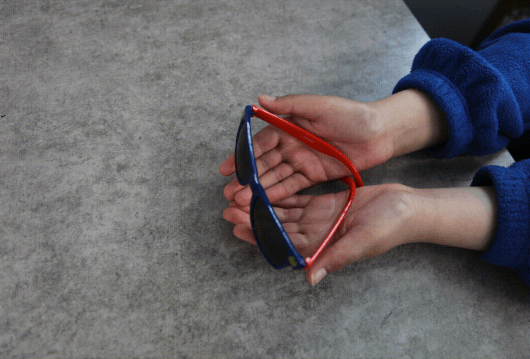
Image courtesy of the artist
The day started in the Main Assembly Hall as Nisha presented a slideshow of images from her last research visit. Previously, Year 5 students were asked to bring an object to school that represented themselves and their heritage. These “show and tell” objects were photographed by Nisha and now the children could see their collective items on the TV monitor for the first time, creating much energy and excitement as each student, in turn, recognised their image. “Can anyone tell me what a symbol is?” asked Nisha to the class – this became a topic of much discussion.
After asking what pupils can expect for the rest of the day’s workshop Nisha responded, “We’ll be thinking about portraiture and representation, using a range of materials to create our own mini-flag designs that symbolise things that are important to us as individuals.”
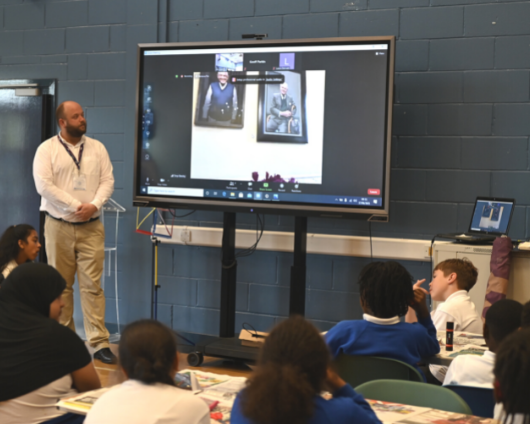
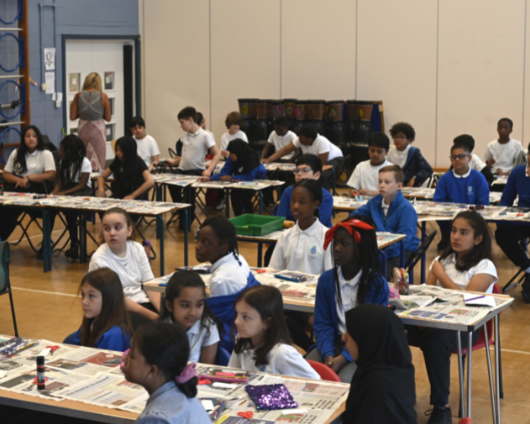
Robin Footitt, ROSL ARTS Visual Arts Coordinator, leads the ‘virtual tour’ of Over-Seas House
Next was a virtual tour of Over-Seas House, the home of Royal Over-Seas League and its clubhouse for members. Due to COVID restrictions ROSL ARTS were unable to invite Year 5 to a guided tour of the building in person. However, with the assistance of a mobile phone and video link the children were soon calling out directions, shouting “STOP!” to look closely at historic features and spotting the portrait of ROSL Patron Her Majesty Queen Elizabeth II in the entrance. They were directed to the flag poles situated outside the headquarters, which have already become a point of focus in Nisha’s residency. “There are prominent flags outside the club in Mayfair. Flags and concepts of nationhood and belonging also seem to resonate with the pupils at Riverley. I thought it was worth exploring in more depth”, Nisha commented. At the front of the hall she unfurled a Royal Over-Seas League flag with a Year 5 volunteer, they immediated recognised the scale from the live video tour.
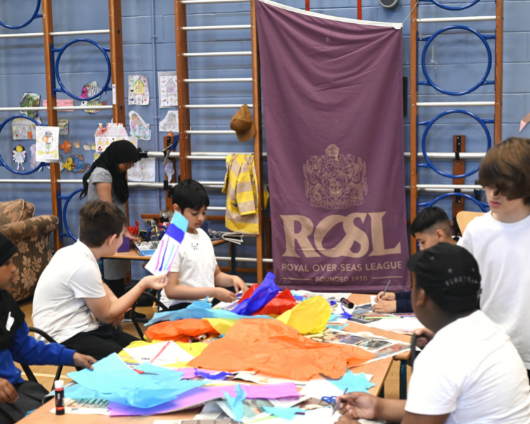
The task was set – using art supplies and paper each pupil would begin to sketch out ideas for their own personal flag. Thinking about what was important to represent, no subject was out of the question whether it be history, hopes for the future or hobbies and interests. The conversations at this stage remain in development and the children will lead how the project evolves as Nisha acknowledged, “It will take a while to draw out I think. The themes I’m covering are difficult – yet vital. I want our relationships to build, trust is important, this will happen as we work more together.”
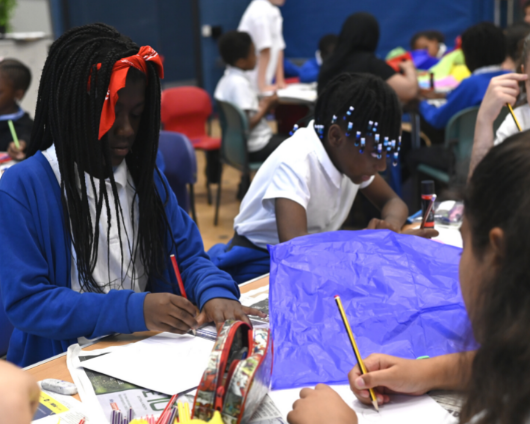
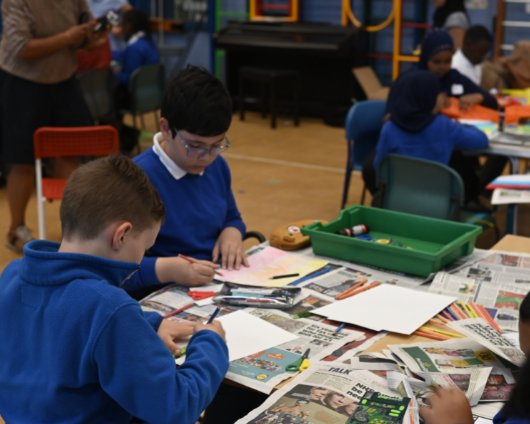
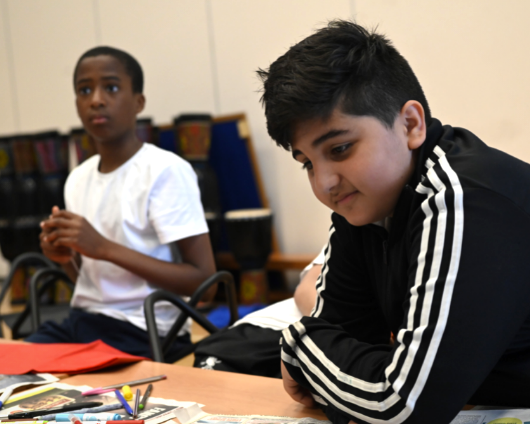
Towards the end of the early session a patchwork of flag identities were already beginning to emerge; themes of nature, sport, home, animals, patterns, fashion and colour were expressed with the art materials made available. With each design came a very eager student explaining what everything meant, some voices were recorded by microphone during the morning by Nisha.
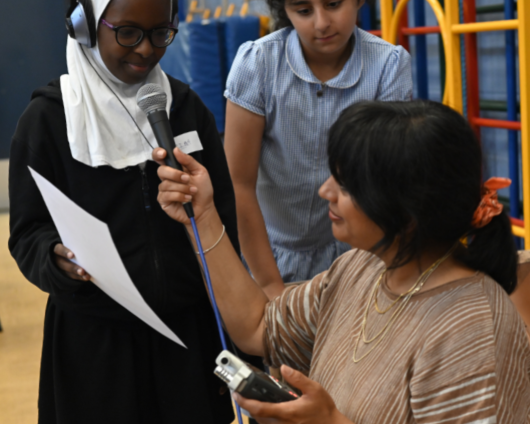
Upon asking Nisha what is next for Riverley in the follow up workshops and forthcoming Griffin Arts Festival, she responded, “I’m adapting the sessions as we move forward to reflect the kids’ input. Next week we’ll be doing some action painting and the week after that moving into experimental sound work. Should be fun!”
We also look forward to much more fun in the forthcoming weeks!
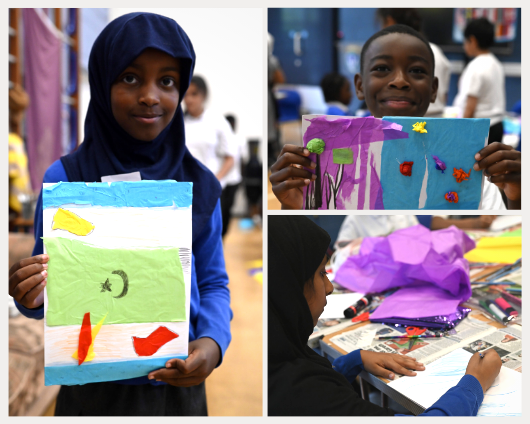
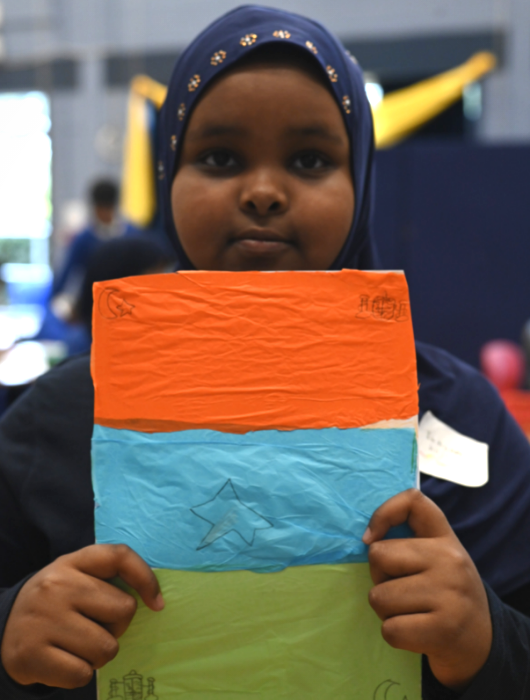
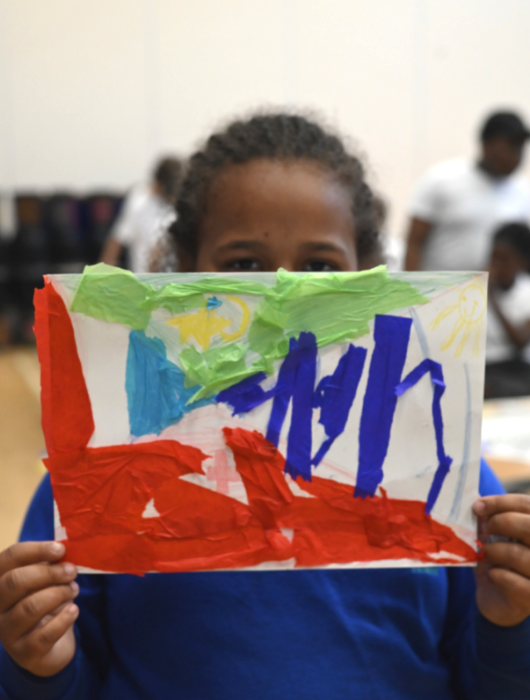
ROSL is pleased to announce Nisha Duggal as Artist-in-Residence in partnership with Riverley Primary School in Leyton, East London. Thanks to generous funding from The National Lottery Heritage Fund, Nisha will create original artworks in response to the heritage and communities of ROSL and the pupils and locality of Riverley, to be displayed at exhibition events in mid-July.
Nisha works internationally, including installations at ArtNight and Watermans (London), Arnolfini (Bristol), Ginza Art Lab (Tokyo), Baltic (Gateshead), and Oriel Mostyn (Llandudno), with screenings at Videobabel (Cusco, Peru), European Media Art Festival (Osnabrueck, Germany), Rekalde (Bilbao, Spain), Cornerhouse (Manchester) and Iniva (London). She been awarded commissions by Site Gallery (Sheffield) and Contemporary Art Forum (Kitchener, Ontario), and was shortlisted for the Jerwood Moving Image Awards in 2008 and the Jerwood/Umbrella Moving Image Awards in 2013.
Over a ten-week period Nisha will explore the heritage of ROSL’s historic Grade I listed home, Over-Seas House, whilst also working with Year 5 pupils from Riverley, supporting them to reflect on their own differing community experiences of heritage alongside that of Over-Seas House. Many of the pupils have rarely left their own part of East London or discovered the exceptional heritage of Central London. They may not feel that buildings such as Over-Seas House have a connection to their own lives and we wish to share our heritage with the pupils to enable them to gain information on these buildings, increase confidence in their knowledge over the histories and purposes of these types of buildings, and to increase their skills in making creative responses to Over-Seas House and the purpose of ROSL in Central London.
Nisha will devise and deliver art workshops based on developing their own creative practice, inspired by the project themes. Throughout the project, both Nisha and pupils will create artworks, which at the end of the project will be showcased at two launch events, one at ROSL and the other at Riverley Primary School, as part of the annual Griffin Arts Festival.
On conclusion of the project, we will install long-term exhibitions and webpages at both ROSL and Riverley to display the project outputs and outcomes and to acknowledge the generous support from National Lottery players through The National Lottery Heritage Fund.
Members will already have seen Nisha around the clubhouse with her camera as she starts to take inspiration from the heritage of our buildings. Yesterday was Nisha’s first visit to Riverley Primary School to meet the two Year 5 classes. In advance of her visit the pupils had been asked to bring in items from home which mean something to them, their family and their communites. Nisha spent time with the children and photographed each one, chatting with them about their objects, which will form part of an initial film, as the project develops.
Look out for more details on the ROSL website, eNewsletters and the Overseas magazine.

HM Queen Elizabeth II is the first British Monarch to have adopted a personal flag. The official description states: “The flag consists of Her Majesty’s initial E ensigned with the Royal Crown, the whole within a chaplet of roses, all in gold, on a blue field, the flag being edged or fringed also in gold.”
The Queen’s personal flag was seen for the first time during the royal visit to India and Pakistan. It was designed in the college of Arms under the direction of Garter King of Arms.
It is square and in varying sizes appropriate to the occasion and the place where it is flown. Such places as buildings, cars, and aircraft in which the Queen is either living or travelling.
Of course, the flag most closely associated with the Sovereign is the Royal Standard, and this will not be supplanted. But whereas the Royal Standard is especially linked with the United Kingdom, the new flag is entirely personal to Her Majesty, and no specifically connected with any one of the nations of the Commonwealth of which she is the head. On occasion, indeed, Queen Elizabeth’s personal flag may be seen flying side by side with the Royal Standard.
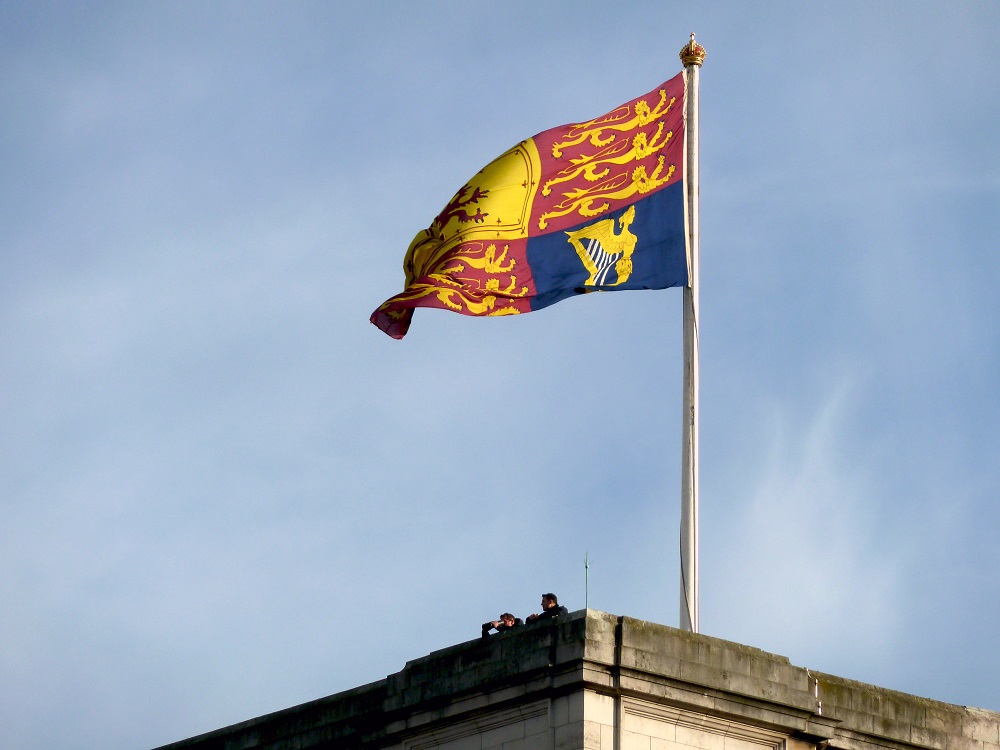
The Royal Standard flying at Buckingham Palace
Royal Standards flown from public buildings and royal residencies when Her Majesty is present vary considerably in size. The normal, or fine weather one, is 18ft by 9ft. There is a 12ft by 6ft standard for bad weather, and a “storm flag”, which measures only 6ft by 3ft. (There is an apocryphal story of a policeman new to Buckingham Palace who reported to his Sergeant that the Royal Standard had shrunk badly during the day.)
The standards at Buckingham Palace are changed often. The stock is kept in perfect condition. A flag is immediately changed if it gets torn while flying, and new flags are flown on any big State occasion.
When Queen Elizabeth goes abroad sometimes as many as two score Royal Standards precede her. They are held in readiness at the places to which she is going. A small Standard flies from her car and one is broken from a royal plane as soon as she boards it. It flies again as the plane taxis down the runway on landing.
Although commonly called the Royal Standard, the flag is, strictly speaking, the Royal Banner. It was the personal battle flag of the Sovereign. Nobody buy royalty has the right to fly it, and during preparations for the Queen’s Coronation a man who flew one from a balcony in London, and who at first refused to remove it when asked, might have found himself in gaol had he persisted.
In medieval times it was often the rallying point in battle, and the area around the Royal Standard was nearly always hard-pressed. At Agincourt 20 French knights, who hard sworn on cross of their swords to capture of kill Henry V, made at him in a compact mass, but every one was slain at the foot of the Standard.
From the Archives: Lord MountbattenServing as ROSL President from 1942 until his death, this article from the December 1942 edition of Overseas by Hector Bolitho, introduces him to members.
Lord Louis Mountbatten, Vice Admiral, Air Vice-Marshal and Lieutenant-General – drawing the functions of Navy, Air Force and Army into Combined Operations with these three ranks, is a remarkable man who has fulfilled both his inheritance and his own promise.
His cousin, the present King, once made a speech, when he was in his teens. He said: “To my mind a great leader must possess three great qualities – personality, sympathy and, above all, idealism. Nobody can lead unless he has the gift of vision and the desire in his soul to leave things in the world a little better than he found them.”
I do no think it is an exaggeration to say that our new President stands for the fulfilment of this order.
He inherits two great qualities with his blood. Courage is the first. One recall his great grandmother Queen Victoria, when a miscreant shot at her. She was very old then. She held the revolver in her hand afterwards and counted the bullets. That element of courage has not faded through four generations.
the second quality Lord Louis Mountbatten inherits is from his father who love the seas and who was a sailor to the core.
Lord Mountbatten evaded the limelight during his early years. He went into the Navy when he was 13. He was a midshipman during the last war, and when it ended he toured the world with the Prince of Wales.
I remember travelling through New Zealand with him on that romantic conquest, when our eyes were fixed on the Prince rather than those who followed him. But Lord Mountbatten had great charm and a certain austere sense of duty which, in leisure, would break into a great talent for pleasure.
It was not until about 1934 that the newspapers began to take much notice of him. I read in a cutting from one London paper published at that time that he was “the best-liked of all our minor royals” and that he invented “ingenious mechanical gadgets.”
Lord Louis was serving in Malta in 1934, and in November he went to the China Sea. In the following year, it was announced that he had invented an “improved navigational ruler” which was patented. The steps of his career were quick and brilliant. In July of 1936 he came ahore and was appointed for duty with the Director of the Naval Air Division.
In May of 1939, Lord Louis emerged into public notice, not only as a prince, but as a sailor standing upon his own merits. He was appointed a captain, at 37 – the youngest to be appointed since the last war. Then he was gazetted to command HMS Kelly.
Then came the tumult of the war, and the first sign of the courage that was illuminated his knowledge when the time cam.e In October of 1939 he helped to rescue a friend from drowning.
When the war was almost a year old, Lord Louis was mentioned in dispatches “for courage, initiative and devotion to duty,” and from that time it was clear that he was to be one of the gallanet celebrities of the time. We read in a newspaper in October 1940 “The King’s cousin is rapidly gaining a reputation as one of the most brilliant and able officers of this war.”
His advance in rank has been won through endless experiences. He was in HMS Javelin when it was hit by a torpedo. Then came the adventures which are supposed to be the basis Noel Coward’s powerful and sensitive film In Which We Serve. Lord Louis was commanding HMS Kelly when the Germans claimed to have sunk her. It was untrue. “Thanks to the seamanship of Captain Lord Louis Mountbatten, one of the Navy’s newest destroyers, the Kelly, is back in service after Germans claimed her sunk,” the newspapers announced in December 1940.
But the Kelly finally sank under German fire in May of 1941. It is this tragedy which Noel Coward has used as the core of his story – a moving and terrible revelation of what sailors’ courage can me.
Lord Louis was saved and he returned to England. His next appointment was to command the Aircraft Carrier Illustrious. But those who sit in high places soon realised that he had the diversity of gifts and the will to direct the Commandos. In April of this year, Lord Louis was appointed to command Combined Operations.
It is not to be expected that he will take an active part in the work of the Over-Seas League during the war. We must upon the time when the horror drifts away. Then, we hope, he will help us in the part we shall play in shaping the world.
That help was provided by Lord Mountbatten at the conclusion of the Second World War, until his untimely death in Donegal Bay in 1979 at the hands of the IRA. Today, members can make use of the Mountbatten Room at Over-Seas House, named in his honour.
This article has been taken from the December 1942 edition of Overseas by Hector Bolitho.
Watch: The Importance of Music EducationROSL prides itself on the good it can do for ‘humanity at large’, one of our founding principles. Today, that is most often achieved through our support of the arts and of education. While not often bringing these two facets of the club together, earlier this year we put music education centre stage. In July, ROSL we were pleased to welcome 25 schoolchildren from Riverley Primary School in Leyton to participate in a workshop with Kabantu, winners of the Mixed Ensembles prize in the 2017 ROSL Annual Music Competition.
The Princess Alexandra Hall was filled with the sounds of Scottish, European, and African folk music, alongside foot stamping, clapping, singing, percussion, and stringed instruments. The workshop marks another step on the road to twinning the school with St Andrew’s Tarabete School in Naivasha, Kenya, where the ROSL Golden Jubilee Trust has partly funded the building of a new music centre, in memory of former ROSL Chairman Simon Ward.
The workshop and resulting performances were professionally filmed and form a video for the London children to introduce themselves to their Kenyan counterparts. This workshop was the next step in our relationship with the Griffin Schools Trust, where in March children held a fundraising day which raised over £700 to buy new instruments to send to the new music centre in Naivasha. Watch how the day unfolded below.
ROSL Pettman Scholarship for Emerging New Zealand Musicians
